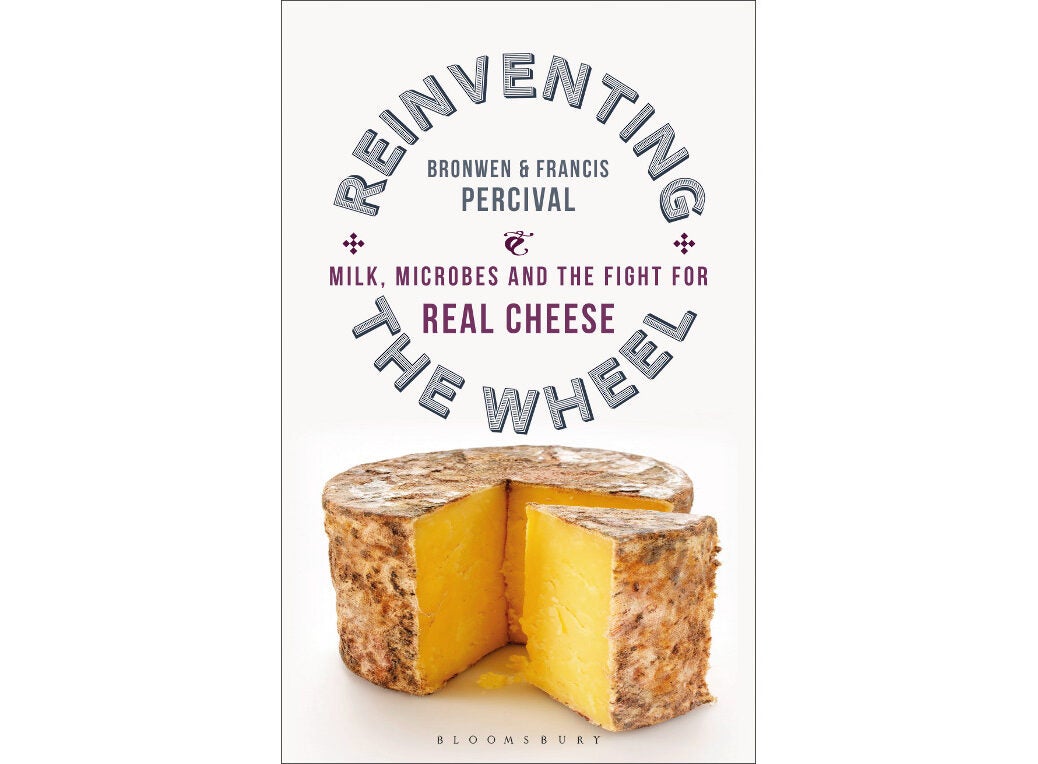
Fromage revolutionaries: A plea for artisanal cheese
Here are three surprising facts I learned from Bronwen and Francis Percival’s fascinating new book, Reinventing the Wheel: First, there is such a thing as dead milk. (Hint: It’s pasteurized.) Second, my ideas about bacteria and sanitation are pretty much wrong when it comes to cheese.
Third, real Camembert, my favorite “wheel,” may be an endangered species. different sort of book, much more ambitious and inspiring. A passionate plea for the artisanal rather than fromage industrielle, it digs deep into rural and culinary history, the contrast between traditional and factory dairy farming, breeds of cows, the nature of milk, the latest microbial science, food politics, and how we look at and interact with the natural world.
It’s what the Percivals call an ecological approach to cheese. “What makes cheese unique,” they write, “is its capacity to link the biodiversity of three different worlds: flora, fauna, and microbiota […]. In the rounded depth of flavor of the cheese, we as consumers can experience the totality of [a] farming system.” It includes dairy animals, the pastures where they graze, the microbiology of their raw milk, and “the poetic ideal of artisanship and mastery” of the cheesemaker. It sounds very much like the notion of terroir that we use when talking about wine.
In the past century, cheese has morphed dramatically from farm craft to industrial marvel of consistency, with all that that entails. Take cows. Holsteins, today’s dominant breed, were developed for mass milk production, which doesn’t make very interesting cheese. French Montbeliarde cows, on the other hand, produce milk with a fat ratio of one to one, ideal for bespoke cheese-making. Their milk is behind Comté, Reblochon, Cantal, and many others.
You might think a book that spends many pages on the intricacies of indigenous microbial communities and their importance in cheese-making would be a boring slog through scientific jargon. This is not the case (though I admit to skimming the most technical parts about gram-positive bacteria). What drew me in and kept me reading were the engaging stories of the farmers, scientists, and rural places the Percivals visited, all woven together into a scholarly cow-to-field-to-plate narrative. Chapters cover topics such as breeds, feed, and risk, with cleverly titled subsections like “Addressing the Udder” and “Disciplining Milk.”
The tales start in the prologue, in a “lost world” in France’s Auvergne, where Guy Chambon makes authentic Salers Tradition cheese. The method of making it survived the Roman conquest, the Black Plague, and World War II, until, just over a decade ago, it was almost done in by politics. The latest microbial research by a French scientist saved it. Dr Marie-Christine Montel, the cheese-makers’ heroine, showed that the interaction between raw milk and the traditional, unwashed wooden buckets they used fostered microbes that actively resisted bad bacteria—and upended some mainstream notions of effective sanitation.
I was struck by the many parallels between “real” cheese and “real” wine, even though one product is solid and the other liquid. They, too, are products of their terroir, and the Percivals judge cheese just as we do wine (they know a lot about it, too), hunting for flavor complexity and uniqueness.
So, why are these cheeses in such danger? One reason is misguided overregulation (though the Percivals don’t shy away from a scrupulous examination of potential health risks and safety). But perhaps the main reason for the decline of farmstead cheese has been the flood of industrial products available at much cheaper prices—and consumers who simply don’t know why the former are worth more. With this book, the Percivals aim to change that. Overall, they come across as optimistic that a new generation of small-scale cheese-makers exploring the techniques of their great-grandparents can be a model for sustainable food production of the future and that new research can help that. I do have a couple of small quibbles. The main one: Where are the photos? The handful of poorly lit black-and-white photos of the cheese-making process look like something out of a 1950s agricultural school textbook and seem like a missed opportunity. It would have been nice to see some of the people, places, and cheeses that are discussed so eloquently in the text.
And I hankered for more detailed information on buying than the threepage appendix. Surprisingly, there is less in the book than you might expect about individual cheeses. Only a handful— Salers, Reblochon, Camembert, Cheddar, Lancashire—make significant appearances. I would have liked more.
Though they live in London, the Percivals have ideal credentials to write this book. Not only is Bronwen the cheese buyer for London’s Neal’s Yard Dairy and co-founder of microbialfoods. org, she also has a family history in the dairy business in California. Francis is a food writer who has worked as a fishmonger and chef. They met at the Oxford Symposium of Food & Cookery, which tells you that they are brainy, as well as obsessed. We’re the lucky recipients of their collaboration.
Published by University of California Press / Bloomsbury $29.95 / £16.99






